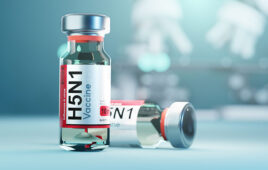TRENTON, N.J. (AP) – Fewer new prescription drugs will get approved in the U.S. this year than the 30 approved in 2011, a ratings agency forecasts, adding to the many stresses on the pharmaceutical industry.
The Food and Drug Administration approved only 14 innovative drugs in the first half of this year, down from 18 in the first half of 2011, according to a report released by Fitch Ratings.
Fitch wrote that there’s been a slowdown in experimental drugs entering late-stage patient testing, while research on promising drugs for depression, high cholesterol and menopause symptoms has recently been halted due to disappointing results. Since January, about 10 other drugs have run into problems delaying approval, with regulators requiring additional data or a new patient study or, in one case, halting a study because of a patient death.
“Branded pharmaceutical developers’ research success of 2011 will be difficult to repeat,” the report states.
The report comes as big brand-name drugmakers are being squeezed from all sides – and their second-quarter results are showing the effects.
Government and other health plans, particularly in debt-laden Europe, continue to push drugmakers to lower prices. The weak global economy has many consumers delaying treatments or looking for cheaper alternatives. And an unprecedented tidal wave of generic competition for many top-selling drugs is slashing the billions of dollars they had been bringing drugmakers.
Since last October, three of what had been the world’s 10 best-selling drugs have gotten generic competition. Those are the long-time best-seller Lipitor, Pfizer Inc.’s high cholesterol pill, plus psychiatric drug Zyprexa and blood thinner Plavix. Next week, another top 10 drug, Merck & Co.’s asthma and allergy pill Singulair, gets generic rivals.
Pharmaceutical companies are still very profitable, but that’s mainly because they’ve been on a tear for several years, slashing jobs and closing factories and research centers to cut their costs ahead of what the industry terms the “patent cliff.” Virtually every major drugmaker has recently had drugs with annual sales of $1 billion or more get generic competition, or it’s right around the corner.
Bristol-Myers Squibb Co. and Eli Lilly and Co. reported second-quarter net income dropped by more than 20% because of generic competition to blockbuster drugs.
Revenue from Lilly’s Zyprexa, which produced more than $5 billion in revenue a year before it got generic competition last October, fell 73% from a year earlier to $380 million.
Bristol-Myers reported its sales of Plavix, which was the world’s second-best-selling drug, plunged by about 60% in the quarter to $741 million. That meant sales fell $1.1 billion even though generics didn’t hit drugstores until May 17. New figures from health data firm IMS Health show that U.S. prescriptions filled for Plavix nosedived from a monthly average of about 2.2 million to just 199,000 in June.
Meanwhile, British drugmaker GlaxoSmithKline PLC, which also released results Wednesday, reported a 6% drop in U.S. sales amid generic competition to herpes drug Valtrex and three other medicines.
And when Pfizer reports its results, its story will be similar. Lipitor, which once brought in $13 billion a year, got generic competition Nov. 30. Monthly Lipitor prescriptions filled in the U.S. have since dropped from about 3.7 million to 1.2 million in May and then just 673,000 in June. That’s when several new generic versions of Lipitor joined the two on sale since December, quickly driving the prices much lower.
The Fitch report shows a decline in productivity of drugmakers’ research programs over nearly two decades. The FDA approved about 55 new drugs in 1996, about 35 in 2004, and about 20 per year since then until the bump to 30 last year.
Date: July 25, 2012
Source: Associated Press
Filed Under: Drug Discovery




